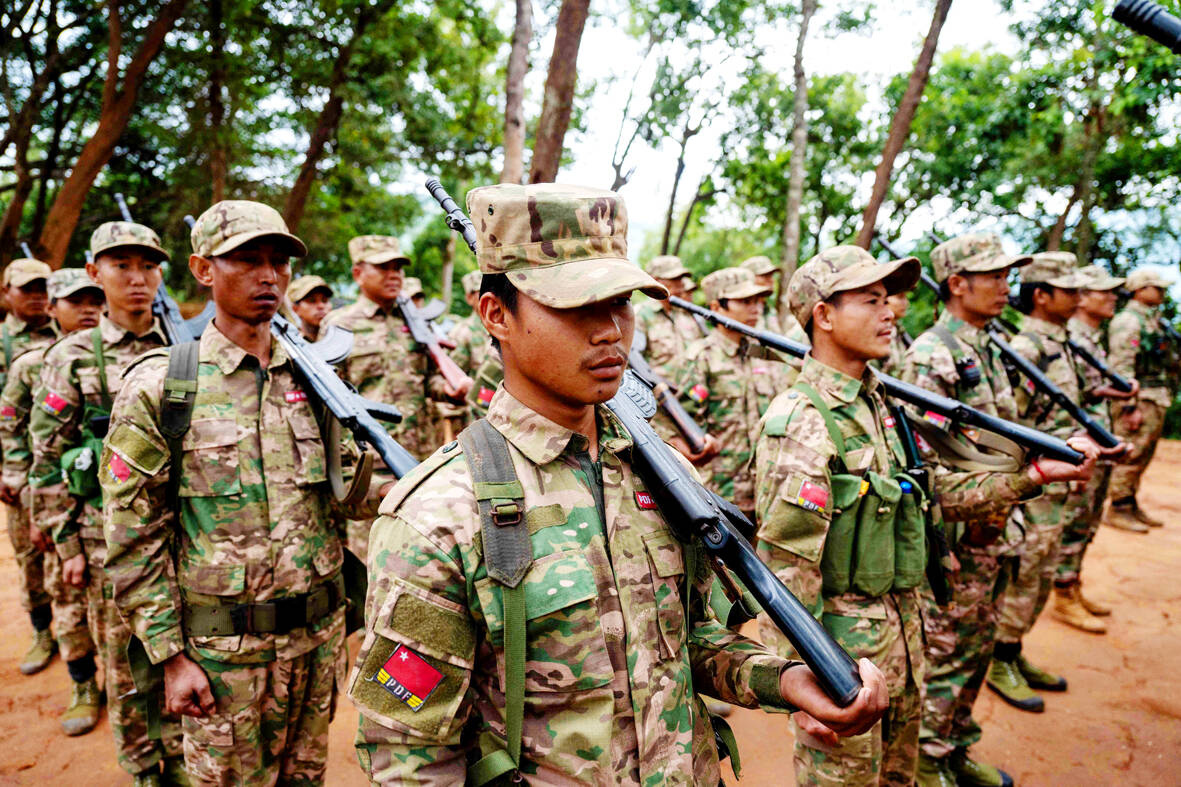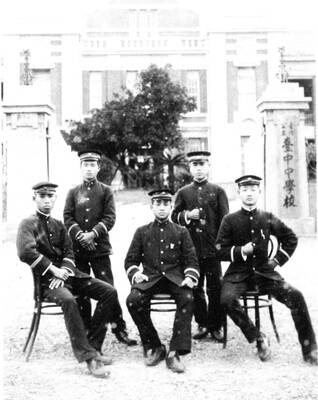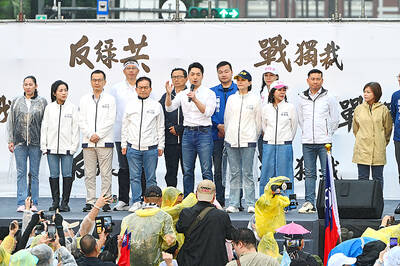Three years ago, young placard-waving Myanmar democracy protesters were hounded from the streets of Mandalay city by soldiers in the wake of the military’s latest coup. Last month some of those same protesters faced off against the military again — but this time they were operating a mortar in northern Shan state, firing rounds at a junta position with swift, practiced movements.
The coup launched three years ago on Thursday was supposed to put control of Myanmar firmly back in the hands of the military after a 10-year experiment with democracy.
Instead it has plunged the country into civil war, crashed the economy and inspired tens of thousands of young people to join “People’s Defence Forces” (PDFs) and wrest their democracy back by the gun. PDF units range from small teams in the scorching plains of Myanmar’s heartlands to larger outfits in rugged border regions where more established ethnic rebel groups have taken them under their wing. It is impossible to determine how many people have died in the conflict.

Photo: AFP
But at least 4,400 people have been killed in the military’s crackdown on dissent since the coup, according to a local monitoring group.
The junta says its opponents have killed more than 6,000 civilians, and describes the PDF fighters as “terrorists” working to destroy the country.
TEACHERS TO FIGHTERS
Years of weathering attacks from the junta’s Chinese and Russian-made weapons have transformed many PDFs into battle-hardened units.
“We have the ability to take down every soldier in our area,” said Ko Phyo, a former teacher who now goes to work for the Mandalay PDF in camouflage uniform and combat helmet.
He was speaking from a defensive position around 15 minutes drive from the town of Pyin Oo Lwin — a former British hill station now home to the military’s elite officer training academy.
“So, before they send a convoy they use heavy weapons and air strikes to cause havoc in our positions,” he said from his trench on the frontlines. “That’s the only strategy they have.”
For Ko Phyo and his comrades — teachers, surveyors and students — the latest coup was proof the non-violent struggle for democracy led for decades by Nobel laureate Aung San Suu Kyi would never dislodge the military from power.
“We shouldn’t be an egg if we want to destroy solid rock,” said Mandalay PDF commander Mone Tine, 30, who before the coup worked at a civil society organization promoting good governance.
“We don’t overestimate the military and we aren’t afraid of them.”
Graffiti on the pockmarked walls of a nearby police station gives graphic proof of the ebb and flow of battle.
On one wall a junta soldier had scrawled an expletive against the PDF, the foe the military has been unable to vanquish. Nearby were written the words “Spring Revolution” — the name given by Myanmar democracy fighters to their struggle — and a depiction of the three fingered pro-democracy salute.
STOLEN AMMO
At their bases in the Shan hills the lives of the Mandalay PDF recruits are a far cry from home, ticking along to many of the same rules and regulations as their military foes. Every morning the group’s flag is raised and a chorus of assembled fighters reaffirms their commitment to overthrowing the junta. Officers are saluted and sharp whistle blasts announce regular air raid drills and send fighters scurrying for cover in trenches.
An administration office hums with activity to keep the fighters clothed, fed and armed. Mone Tine would not give details on exactly how many fighters the Mandalay PDF has, but said it was in the “high thousands.” Finding the money to keep operations running is “a big problem,” he admitted, with the group largely reliant on donations from a sympathetic population and from members of the diaspora. For weapons and ammunition the group looks elsewhere — including the junta.
“It’s a good feeling to attack the military with the ammunition that we seized from them,” said Mone Tine.
Many of Mone Tine’s fighters received combat training from the Ta’ang National Liberation Army (TNLA), an ethnic minority armed group that has long battled the military for more autonomy.
Ethnic armed groups in northern Kachin and eastern Karen states have also taken in PDF fighters for training.
Few expect that the PDF groups can topple a military that has run Myanmar for much of the country’s 70 plus years of independence.
But their various alliances with the ethnic armed groups, some of which have fought central authorities for decades, have undoubtedly shaken the junta.
In October Mandalay PDF fighters joined a months-long offensive by an ethnic rebel alliance that led to the opposition forces gaining swathes of territory in northern Shan state.
Analysts say that offensive has left the junta at its weakest since it seized power.
On the front lines in Shan state, “Sugar,” — a pseudonym — said there was no turning back for his comrades in the Mandalay PDF.
“Our battlefield experiences have made us into different soldiers. We are learning from fighting and fighting while learning,” the 33-year-old said.
“We know we have to sacrifice. We have adapted ourselves and have no more fears.”

April 28 to May 4 During the Japanese colonial era, a city’s “first” high school typically served Japanese students, while Taiwanese attended the “second” high school. Only in Taichung was this reversed. That’s because when Taichung First High School opened its doors on May 1, 1915 to serve Taiwanese students who were previously barred from secondary education, it was the only high school in town. Former principal Hideo Azukisawa threatened to quit when the government in 1922 attempted to transfer the “first” designation to a new local high school for Japanese students, leading to this unusual situation. Prior to the Taichung First

The Ministry of Education last month proposed a nationwide ban on mobile devices in schools, aiming to curb concerns over student phone addiction. Under the revised regulation, which will take effect in August, teachers and schools will be required to collect mobile devices — including phones, laptops and wearables devices — for safekeeping during school hours, unless they are being used for educational purposes. For Chang Fong-ching (張鳳琴), the ban will have a positive impact. “It’s a good move,” says the professor in the department of

On April 17, Chinese Nationalist Party (KMT) Chairman Eric Chu (朱立倫) launched a bold campaign to revive and revitalize the KMT base by calling for an impromptu rally at the Taipei prosecutor’s offices to protest recent arrests of KMT recall campaigners over allegations of forgery and fraud involving signatures of dead voters. The protest had no time to apply for permits and was illegal, but that played into the sense of opposition grievance at alleged weaponization of the judiciary by the Democratic Progressive Party (DPP) to “annihilate” the opposition parties. Blamed for faltering recall campaigns and faced with a KMT chair

Article 2 of the Additional Articles of the Constitution of the Republic of China (中華民國憲法增修條文) stipulates that upon a vote of no confidence in the premier, the president can dissolve the legislature within 10 days. If the legislature is dissolved, a new legislative election must be held within 60 days, and the legislators’ terms will then be reckoned from that election. Two weeks ago Taipei Mayor Chiang Wan-an (蔣萬安) of the Chinese Nationalist Party (KMT) proposed that the legislature hold a vote of no confidence in the premier and dare the president to dissolve the legislature. The legislature is currently controlled